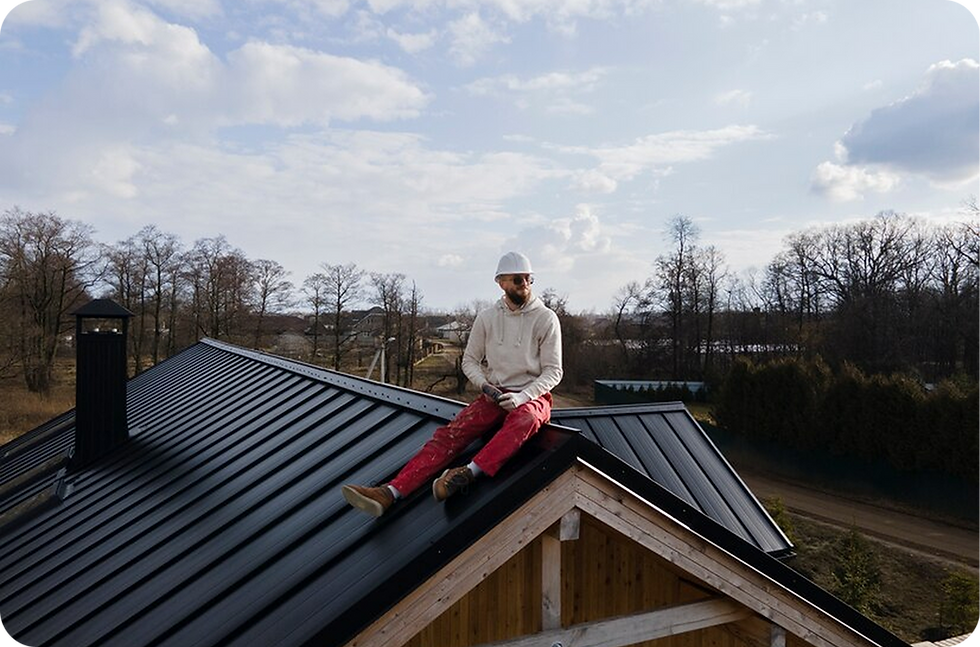How Often Should You Replace Your Roof?
- Ashley Brissette
- Jul 8
- 3 min read
When it comes to home maintenance, the roof is often overlooked. However, knowing when to replace your roof is vital for protecting your home and preserving its value. Several factors influence your roof's lifespan, including the material used and the climate in your area. This guide will help you recognize when it’s time for a replacement and outline how frequently different roof types should be replaced.
Understanding Your Roof’s Lifespan
Most roofs last between 15 to 50 years, depending on the materials chosen. For instance, asphalt shingles typically last about 20 to 25 years, while metal roofs can endure for up to 70 years. Knowing the lifespan of your roofing material will help you gauge when a replacement is warranted.
Regular inspections are key. They allow you to monitor your roof’s condition and catch issues early, potentially saving you from costly repairs down the line.
Factors Influencing Roof Replacement
1. Roofing Material
The material of your roof plays a significant role in determining its lifespan:
Asphalt Shingles: 20-25 years
Wooden Shakes: 20-30 years
Metal Roofing: 40-70 years
Slate or Tile: 50+ years
Opting for durable materials can be a smart investment. For example, while asphalt shingles may be cheaper upfront, metal roofing can last twice as long, reducing the need for future replacements.
2. Climate and Weather Conditions
The weather in your area can significantly impact your roof's longevity. For example, regions that face heavy snowfall or frequent storms often see roofs deteriorate faster. A study found that roofs in harsh climates can wear out 25% quicker than those in milder conditions.
If you live in a storm-prone area, it may be worth discussing with a roofing professional how to enhance your roof’s resilience, such as by installing impact-resistant shingles.
3. Maintenance Routine
Regular maintenance can extend your roof's life. A well-maintained roof can last 30% longer than one that is neglected. Simple actions can make a difference:
Clean gutters regularly to prevent water buildup.
Remove debris that can trap moisture.
Address small repairs promptly to avoid larger issues.
If you take care of your roof, it can save significant money over its lifetime.
Signs You Might Need a Roof Replacement
Being aware of signs that indicate it’s time for a roof replacement is crucial. Look for the following symptoms:
1. Age of the Roof
If your roof is approaching the end of its expected lifespan, plan for a replacement soon.
2. Missing or Damaged Shingles
Missing, curled, or cracked shingles can lead to leaks and indicate that your roof needs urgent attention.
3. Leaks and Water Damage
Noticing leaks or water stains on your ceilings and walls often suggests that your roof is failing.
4. Moss and Algae Growth
The presence of moss and algae might mean there are underlying moisture problems, signaling that your roof is past its prime.
5. Granules in Gutters
Finding granules from asphalt shingles in your gutters can indicate that your roof is deteriorating. These granules protect the shingles from UV rays, so their presence in gutters is a sign of significant wear.
The Cost of Roof Replacement
Considering the cost of roof replacement is essential. Prices vary based on material, roof size, and labor, with homeowners typically spending between $3,000 and $15,000 for a complete replacement.
While this may seem expensive, a new roof can increase your home's value by up to 15% and save you from extensive repair costs in the future.
Seeking Professional Advice
If you're unsure about the condition of your roof, consulting a professional roofing contractor is a wise decision. They can provide a thorough inspection and valuable recommendations based on your specific needs.
Final Thoughts
Replacing your roof is more than just an aesthetic consideration; it is crucial for the overall safety and functionality of your home. By staying informed about how often you should replace your roof and recognizing the signs of wear, you can make sound decisions that will protect your property in the long run.
Emphasizing regular maintenance, understanding your roof’s materials and environmental factors, and seeking professional guidance when needed will help you manage your roofing needs effectively. A well-maintained roof not only enhances your home's appearance but also significantly boosts its value.





Comments